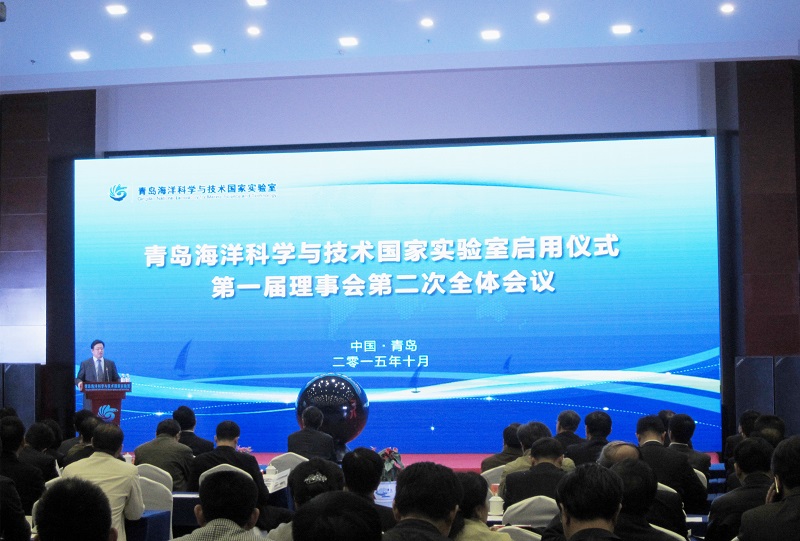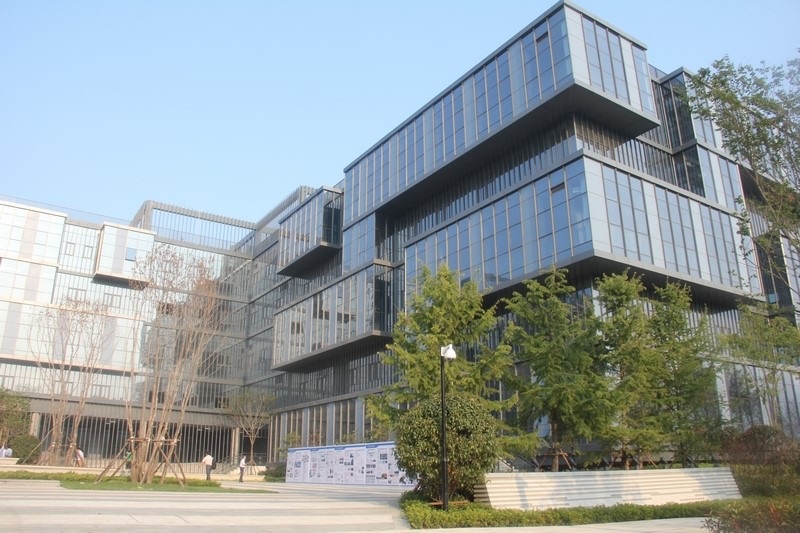The Qingdao Marine Science and Technology National Laboratory (hereafter referred to as the “Marine National Laboratory”) commenced services on 30 October, 2015. The ceremony was hosted by Wang Xiaofang, the Secretary General of the Marine National Laboratory Committee. Many dignitaries including Li Qun, Member of the Standing Committee of Shandong Province and Party Secretary of the Qingdao Municipal Party Committee, Ma Yanhe, Director of Basic Research Department in the Ministry of Science and Technology as well as Chen Yiyu, Chairman of Board of Directors of the Marine National Laboratory attended the ceremony.
As the only national laboratory in this field, the laboratory is an important platform for national marine scientific and technological innovation and a carrier of the dream to explore abysmal seas. Meanwhile, it lays a sound foundation for the implementation of “marine +” operations, the establishment of a leading ‘blue economy’ city and the strategy of strengthening China through marine science. On the same day, the First Session of the Marine National Laboratory Committee was held during the Second Plenary Meeting. Yuan Yingjin, Vice President of Tianjin University attended the meeting.

Qingdao Marine Science and Technology National Laboratory Opens
With an area of 640 mu (0.427 million square meters), the Marine National Laboratory has drawn an accumulative investment of¥1.3 billion and will receive a stable capital support of more than¥0.5 billion per year. At the conference, based on the requirements of the national marine strategies and the 13th Five Year Plan, the National Marine Laboratory has identified three major scientific and technological projects of clean oceans, marine creatures and marine resources.
The laboratory also announced six research focus of marine dynamic processes and climate change, marine technology and equipment, the evolution and protection of marine ecological environments, marine lifecycle and utilization of resources, seabed and oil and gas resources, extreme environments and strategic resources of abysmal and polar seas, and of what. In addition eight Laboratories and two joint laboratories will be established. The latter will respectively be built by Tianjin University and China Shipbuilding Industry Corporation.
According to the plan, as council member of the national marine laboratories, Tianjin University will be responsible for the development of “Joint Laboratories for the Research and Development of Marine Monitoring Equipment”, and focus on the research and development in the field of marine engineering equipment, monitoring of marine exploration, comprehensive utilization of marine resources and marine biotechnology. The Marine National Laboratory bid for the research and development of the joint laboratory by providing an operation area of 5,700 square meters and initial operational funds.

The First Session of Marine National Laboratory Committee held at the Second Plenary Meeting
During the same period, the First Academic Committee was established in the Marine National Laboratory to guide the innovative research interests, main developmental fields as well as major research tasks of the 13th Five Year. Yao Jianquan, an expert in laser and nonlinear optical field at Tianjin University, was invited to attend the conference as a member of the First Academic Committee.

Qingdao Marine Engineering Research Institute of Tianjin University
It was reported that Tianjin University would be committed to the construction of the joint laboratory of marine observation and observation and investigation, serve the national strategy of strengthening China through marine science and apply the marine scientific achievements and technologies to promote the ‘blue economic’ development in the future. Located in the core zone, of the Qingdao “silicon valley”, the Qingdao Marine Engineering Research Institute of Tianjin University, which is an important section of the “Oceanography Institute—Ocean × Interdisciplinary Research Center—Oceanographic Engineering Institute” development pattern, will seize the opportunity of the application of Marine National Laboratory to progress into a world-class oceanographic engineering research institute.